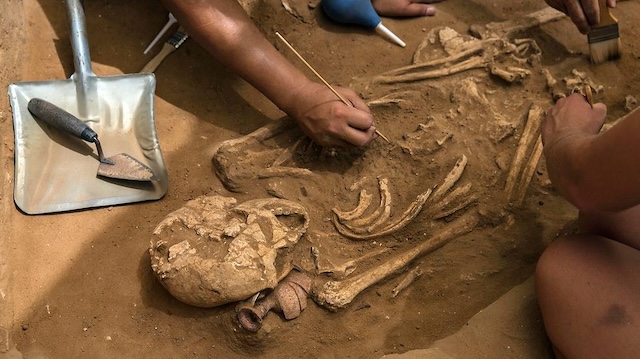The Philistines, an ancient people mentioned throughout the Hebrew Bible, have long been shrouded in mystery. Where did they come from? What were their origins? A recent breakthrough in DNA analysis has revealed remarkable new insights into their ancestry, linking them to European origins. This discovery has reignited debates among archaeologists, historians, and scholars about the migration patterns and cultural influences of the Philistines. In this article, we delve into these fascinating revelations and explore how ancient DNA is shedding light on the enigmatic origins of the Philistines.
The Study of Ancient DNA
The discovery of Philistine DNA in the city of Ashkelon, located on the Mediterranean coast, has provided key information about this mysterious civilization. A groundbreaking 2019 study, published in Science Advances, analyzed DNA extracted from ten individuals buried in Ashkelon during the second and first millennia B.C.E. The study focused on skeletons found from the Bronze Age, Iron Age I, and Iron Age II, which correspond with the period during which the Philistines are believed to have arrived and settled in the Levant.
The results of the study have been nothing short of remarkable. The DNA analysis showed that the inhabitants of Ashkelon during the Iron Age I, around 1200–1000 B.C.E., had significant amounts of European ancestry—an unusual finding for the Levant during that time. This evidence strongly supports the theory that the Philistines were part of the Sea Peoples, a group of migrants or invaders from the Aegean region who moved into the eastern Mediterranean at the end of the Late Bronze Age.
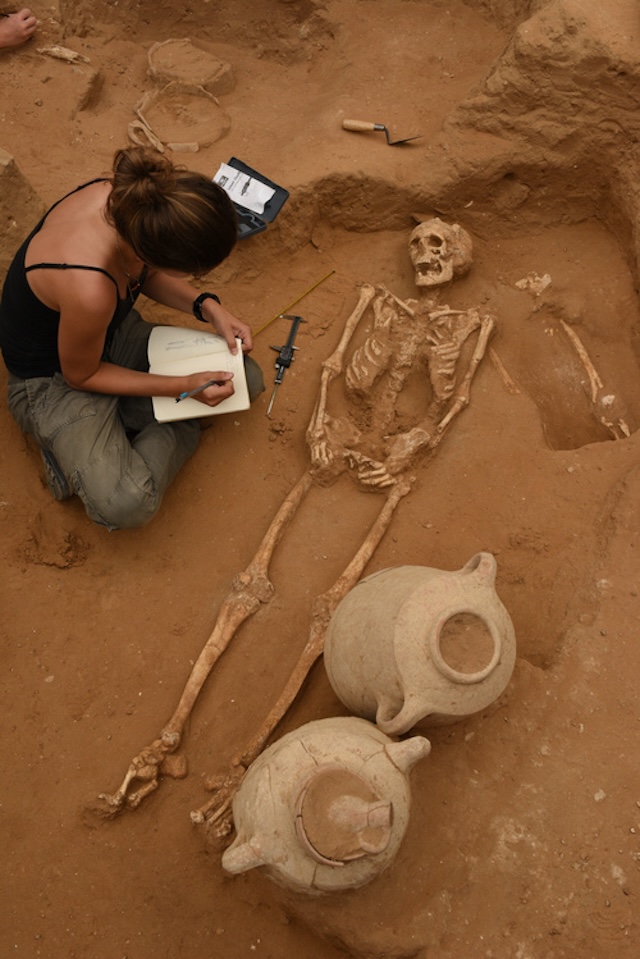
Philistines and the Sea Peoples Debate
For centuries, scholars have debated the origins of the Philistines. The Hebrew Bible, as well as ancient Egyptian inscriptions, provides clues to their background. In biblical texts, the Philistines are said to have come from a place called Caphtor, often identified with the island of Crete or the broader Aegean region (Deuteronomy 2:23; Jeremiah 47:4; Amos 9:7). Meanwhile, Egyptian records from the time of Ramses III (circa 1200 B.C.E.) mention the Sea Peoples, a coalition of groups believed to have migrated or invaded the Levant, including the Philistines.
The exact identity of the Sea Peoples has long been a topic of debate. Were they a single homogenous group, or were they a loose confederation of different tribes and peoples from various regions of the Mediterranean? The DNA evidence from Ashkelon suggests that at least some of the Philistines came from southern Europe, likely the Aegean world. This lends credence to the idea that they were part of the Sea Peoples, who migrated from their original homeland, potentially due to climate change, political upheaval, or famine.
Ashkelon: A Major Philistine City
Ashkelon was one of the five key cities of the Philistine pentapolis, along with Gaza, Ashdod, Ekron, and Gath. These cities were vital centers of Philistine culture, trade, and politics. The city of Ashkelon, in particular, has been extensively excavated by archaeologists. The Leon Levy Expedition, which conducted excavations at Ashkelon from 1985 to 2016, uncovered a wealth of artifacts spanning six millennia, from the Chalcolithic period (circa 4000 B.C.E.) to the time of the Crusaders and Mamluks (1270 C.E.).
Among the many discoveries made at Ashkelon was a large Philistine cemetery dating back to the Iron Age. This cemetery, dating from the 10th to the 9th centuries B.C.E., provided the skeletal remains that were used in the DNA analysis. Additionally, burials of infants in jar graves beneath houses from the 12th century B.C.E. (Iron Age I) yielded further evidence of the Philistine population during this period.
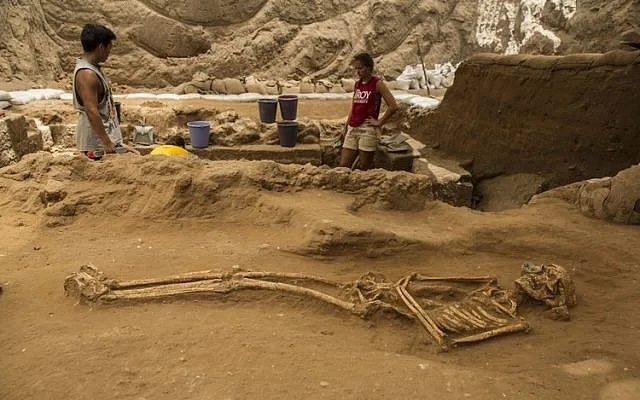
Archaeological Discoveries in Ashkelon
Excavations at Ashkelon have provided a treasure trove of information about Philistine culture. The Philistines, who settled in the Levant during the Iron Age, exhibited distinct cultural markers that set them apart from their neighbors. Their pottery, architecture, jewelry, tools, and weapons all display clear connections to Aegean cultural practices, further supporting the idea that they originated from that region.
Artifacts such as pottery with Aegean motifs and styles, as well as unique Philistine architecture, indicate that they brought with them new techniques and knowledge from their homeland. Over time, however, Philistine culture began to blend with local Levantine traditions, resulting in a hybrid culture that was distinctly Philistine, yet influenced by the surrounding peoples.

Decoding the DNA Results
The DNA analysis conducted on the remains from Ashkelon has revealed fascinating insights into the genetic makeup of the Philistines. The study focused on three groups of individuals: Bronze Age people (before the arrival of the Philistines), Iron Age I individuals (the time of the Philistine arrival), and Iron Age II individuals (a later period when the Philistines had fully integrated into the local population).
The Bronze Age inhabitants of Ashkelon had a genetic profile consistent with other Levantine populations, with heritage tracing back to the Stone Age peoples of the region, Anatolia, and Iran. However, the DNA of the Iron Age I individuals—infants buried in jars—showed an influx of European genes. This admixture suggests that the early Philistines had recently arrived from Europe, likely the Aegean region. Over time, the Philistines intermarried with the local Levantine population, and by the Iron Age II, their European ancestry had largely disappeared.
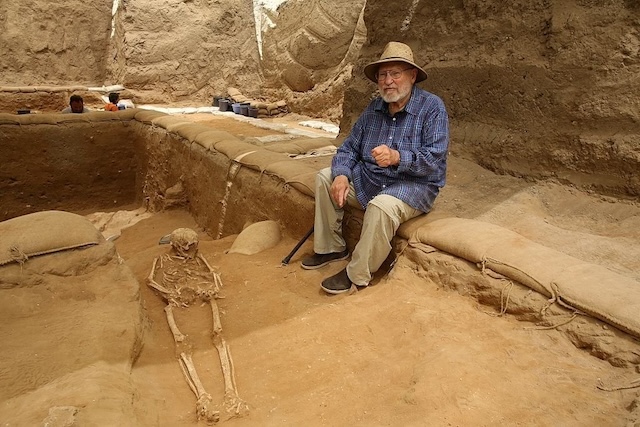
The Disappearance of European Ancestry
One of the most intriguing findings from the DNA analysis is the rapid disappearance of European ancestry within a few generations. By the 10th and 9th centuries B.C.E., the Philistines had likely intermarried with the local population to such an extent that their European genetic signature was no longer prominent. This suggests that, although the Philistines initially arrived in the Levant as a distinct group, they quickly integrated into the local culture and gene pool.
This blending of cultures and genetics is a testament to the interconnectedness of the ancient world. The Philistines, while maintaining their distinct identity for a time, ultimately became part of the broader Levantine society. Their story is one of migration, adaptation, and assimilation—common themes throughout human history.
The Continuing Mystery of the Philistines’ Origins
While the DNA analysis from Ashkelon has provided valuable new insights into the origins of the Philistines, many questions remain. For instance, when exactly did the first Philistines arrive in the Levant, and what was their genetic makeup at that time? How long did it take for them to fully integrate into the local population? And where exactly was Caphtor, the mysterious land mentioned in the Hebrew Bible?
As archaeologists continue to excavate Philistine sites and analyze ancient DNA, more pieces of the puzzle will undoubtedly emerge. Until then, the story of the Philistines’ origins remains a fascinating chapter in the history of the ancient world—one that combines myth, archaeology, and cutting-edge science to illuminate the past.
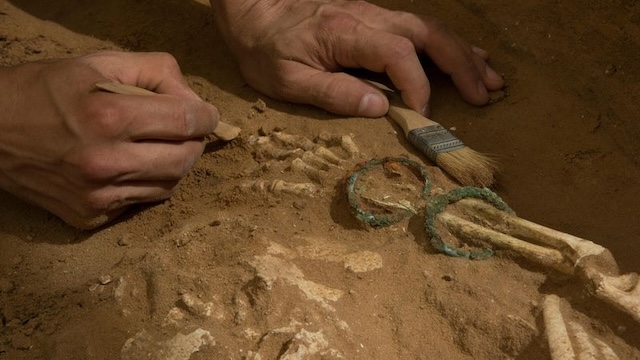
Conclusion
The Philistines, long enigmatic figures in the annals of ancient history, are slowly revealing their secrets through the lens of modern science. The discovery of their European ancestry through DNA analysis not only confirms the long-held theory of their migration from the Aegean but also provides new insights into the cultural and genetic blending that took place in the Levant. As more archaeological discoveries are made and further studies are conducted, the mystery of the Philistines’ origins will continue to unfold, enriching our understanding of this remarkable ancient people.
